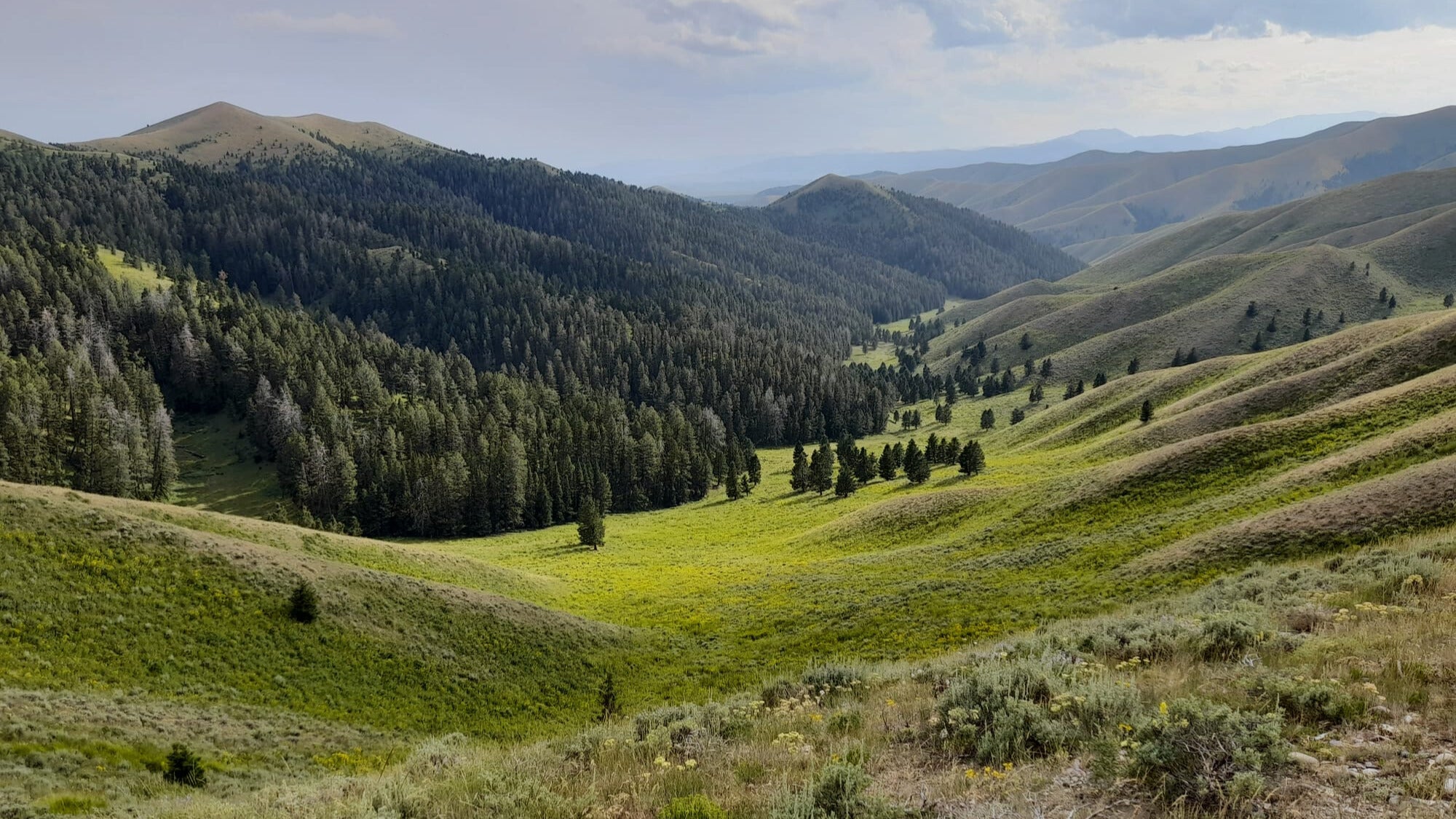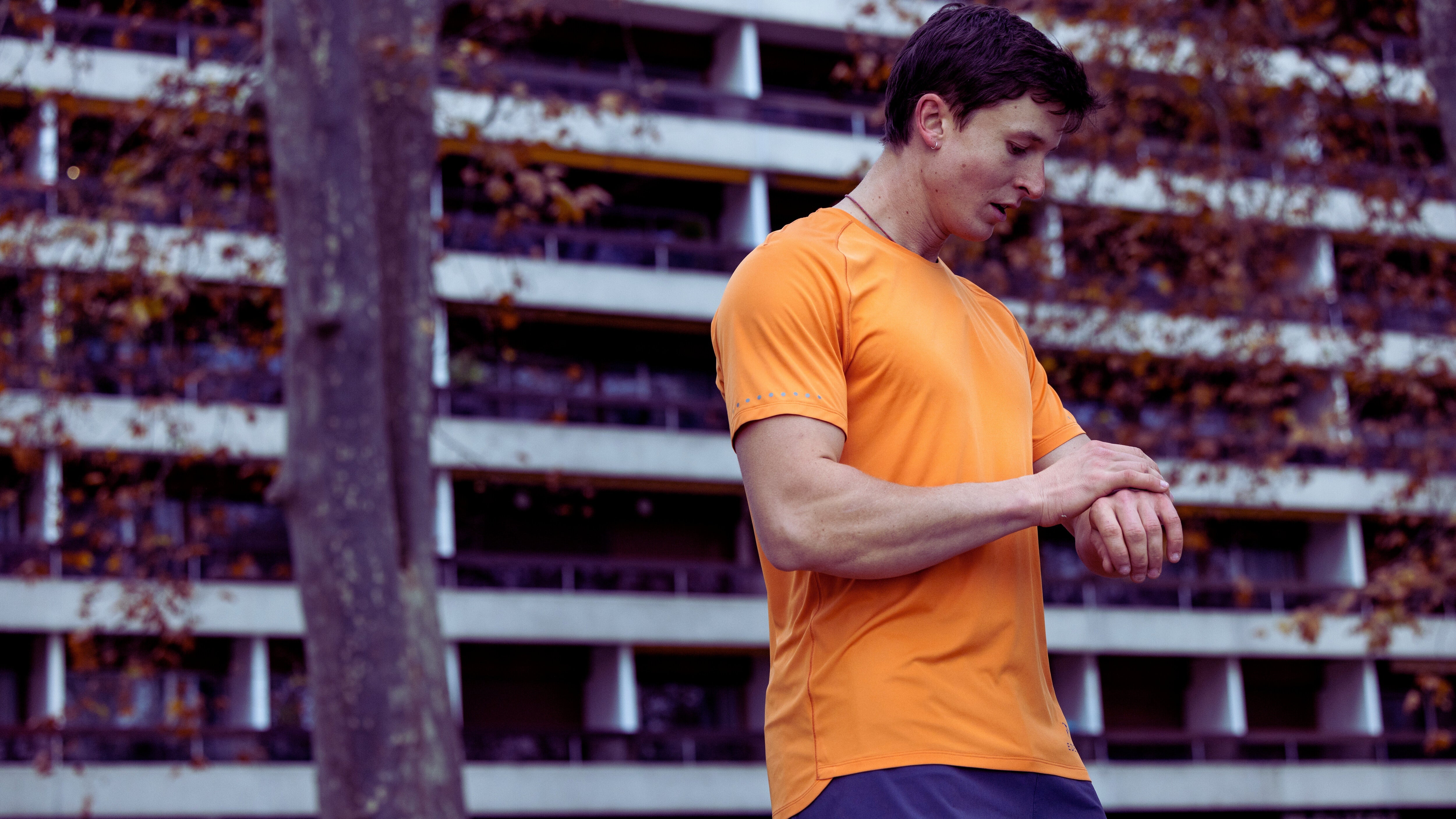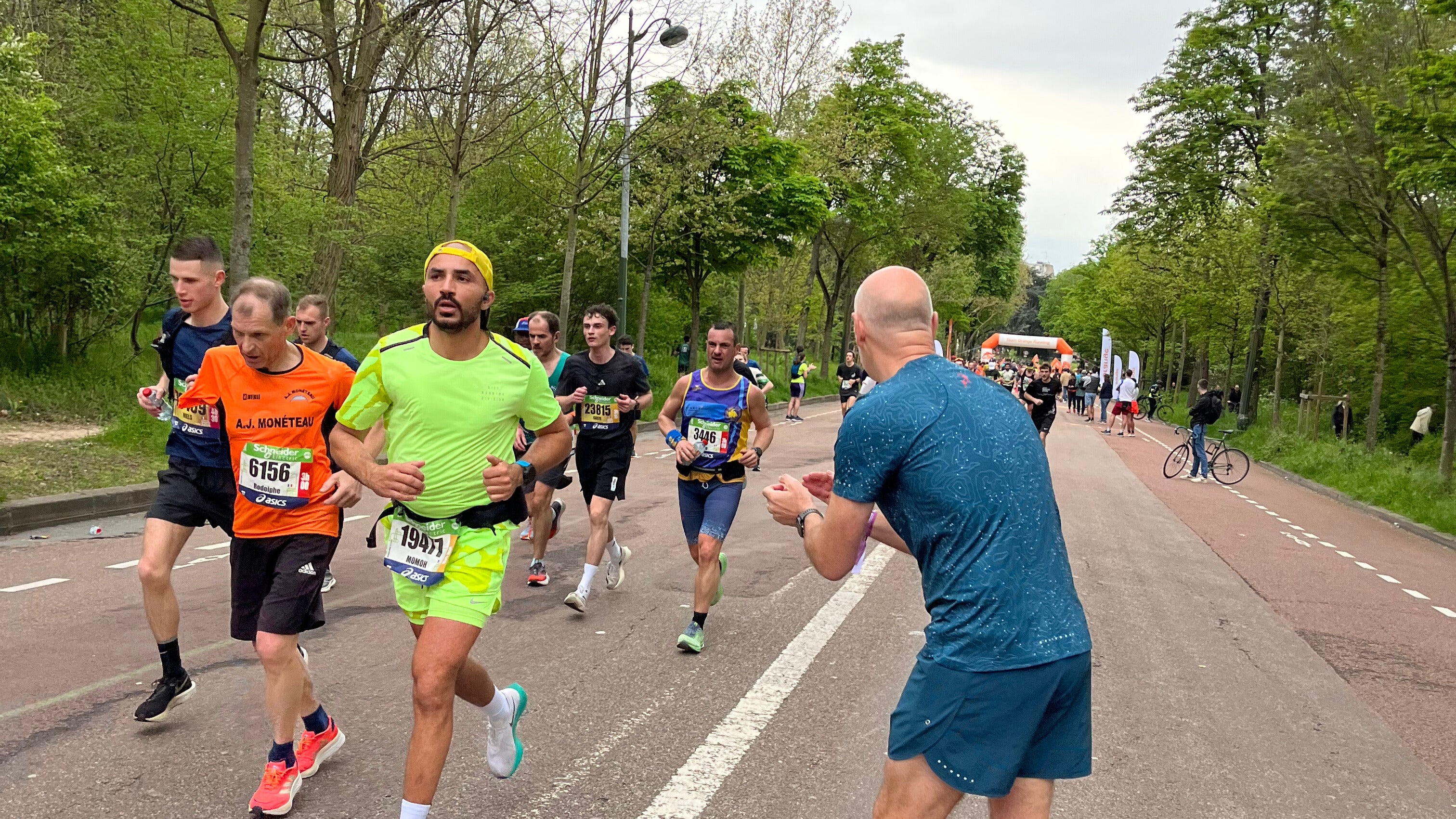
The great crossing of the United States from south to north - episode 3
An extraordinary adventure
Episode 3: Crossing the Northern States
After crossing Colorado, Pierre-Loïc arrives in a third state, Wyoming. When he leaves Colorado, he has already traveled half of the CDT, or about 1,500 miles or 2,400 kilometers. As soon as he arrives in Wyoming, he quickly finds himself in the middle of a very large plateau called the Great Basin. It is a high-altitude plateau, still between 2,500 and 3,000m. This large basin gives the impression of a large plain with very few trees. Unlike Colorado where Pierre-Loïc did not see much wildlife, he was able to observe many different species on this large basin, this large plateau with few trees. Among other things, he came across antelopes, wild horses and a very large herd of elk. There were more than a hundred of them that started running across the plain. It was magnificent.
In terms of the weather, it was necessary to protect oneself from the sun and the wind again. He remembers having lunches with a 'sick' wind without any trees to protect oneself from the sun. This crossing of the large basin lasted almost a week. It was still necessary to travel almost 400 kilometers to cross this large basin.
After spending a long time in this great plain, Pierre-Loïc finally saw the next mountains in the distance, the Wind River Range . This mountain range is little known but very beautiful with a succession of lakes, peaks, very varied landscapes with extraordinary bivouac spots. On the other hand, it was difficult to stay outside in the evening because of a very large number of mosquitoes at this time of year and it was necessary to protect oneself from them all day long.
After crossing the Wind River Range, he arrives near the famous Yellow Stone Park. He crossed it for only three days. It is a very wild national park, quite varied and very pleasant for hiking. He even had the pleasant surprise of finding rivers with hot water at 40 degrees and was able to take baths that he still remembers.
He also saw his first Grizzly at Yellow Stone. It was a young Grizzly. It was coming from the right of the path. He finally spotted Pierre-Loïc. They looked at each other for a short moment and then the young Grizzly ran away. Between hikers, the possibility of meeting a Grizzly was clearly a topic of conversation. Many hikers were apprehensive about meeting one and used bells or listened to podcasts on their cell phones to make noise and keep a potential Grizzly away from their path. Pierre-Loïc was not in this state of mind. On the contrary, he wanted to see and meet some. He would meet several later during his great crossing, including one that was older and much larger than the first one he met in Yellow Stone Park.
As he leaves the park, Pierre-Loïc quickly passes through Idaho, the fourth state he crosses after New Mexico, Colorado and Wyoming. At this point in his adventure, he has covered nearly 2,000 miles, or two-thirds of the CDT route. He will now head towards the last two northern states, Idaho and Montana.
He describes the mountains of these northern states, those that he will follow along the watershed as gentler mountains with forest islands, which remind him of landscapes in the Highlands of Scotland. What struck him most was the presence of many flowers and many lakes. Very beautiful landscapes, quite varied and finally without snow. It is also in these states that he met many SOBO, South-Bound, hikers who also cross the United States along the CDT but in the opposite direction, from north to south.
After hundreds and hundreds of kilometers of walking, Pierre-Loïc demonstrated, as the song says, that "a kilometer on foot wears you out, wears you out, a kilometer on foot wears you out your shoes...", since in the end he used five pairs of shoes instead of the three pairs he had originally planned. The lava fields in Mexico, the use of crampons in New Colorado, and over the last month, paths made mostly of stones rather than dirt wore out his soles and shoes faster than he had imagined. As for clothing, he was able to do the entire route with a pair of shorts and two EDELI brand T-shirts. We sponsored him because his adventure inspired us a lot and also to test our clothing with a real-life test: 4,800 km and 111 days in a row in the open air, in the sun, in the wind, in the rain, in the snow... almost every weather condition imaginable in the space of three months.
During the 900-mile crossing of Idaho and Montana, Pierre-Loïc spent entire days in the wilderness without meeting anyone, an experience of both solitude and immersion in the nature he had come to seek and that he found especially during this crossing of the Northern States. He never felt tired, even if some days were very similar in the sequence of the day and in the landscapes he traveled through. During these last weeks, he sensed in other hikers a desire for 'it to end'. But for his part, he was always happy every morning to be able to leave for a new day of hiking in the wilderness in these vast landscapes and large natural spaces of North America.
One of Pierre-Loïc's last anecdotes during the CDT was his encounter with the last Grizzly in the park called 'Glacier' in Montana. This Grizzly was by far the most imposing of all those he had encountered along the CDT. Between his first encounter in Yellow Stone and his last in Glacier, he had encountered two others. Each time, they were solitary Grizzlies, which is preferable to meeting, for example, a mother with her cubs. Pierre-Loïc really wanted to meet Grizzlies during his CDT and he finally encountered four, in addition to all the other encounters with the varied fauna that lives all along the CDT route: lizards, rattlesnakes, moose, wild horses, antelopes...
After 4800 km and 111 days of adventure, Pierre-Loïc finally reached the stele that marks the end of the CDT route (for him and all the NOBOs – North Bound). Unfortunately, that day, it was raining heavily and Pierre-Loïc could not stay too long to celebrate this moment. But in the days that followed, he realized what he had just accomplished. And he describes his feelings in the days that followed the end of his adventure as a real moment of apotheosis. He felt deeply at peace and happy to have been able to live this great adventure from the first to the last day.
After having completed this superb crossing, his advice is in two words if such an adventure tempts you: do not hesitate! Of course, you need to have time to do it. But it is not superhuman. It is possible to do this crossing at your own pace. You just need to find meaning in it and want to embark on this beautiful adventure.
Finally, for everyone, Pierre-Loïc also has a piece of advice, like a little secret: 'spend a night under the stars once in a while'. It's a magical experience for everyone, regardless of age. That's what he misses now that he's back, this life outside in nature and bivouacs under the stars.



Leave a comment
This site is protected by hCaptcha and the hCaptcha Privacy Policy and Terms of Service apply.